When you walk through the Prague historic center while being hungry, stop by one of many street vendors and buy langos bread. This deep-fried delicacy will drive your hunger away, and besides, it tastes so delightful!
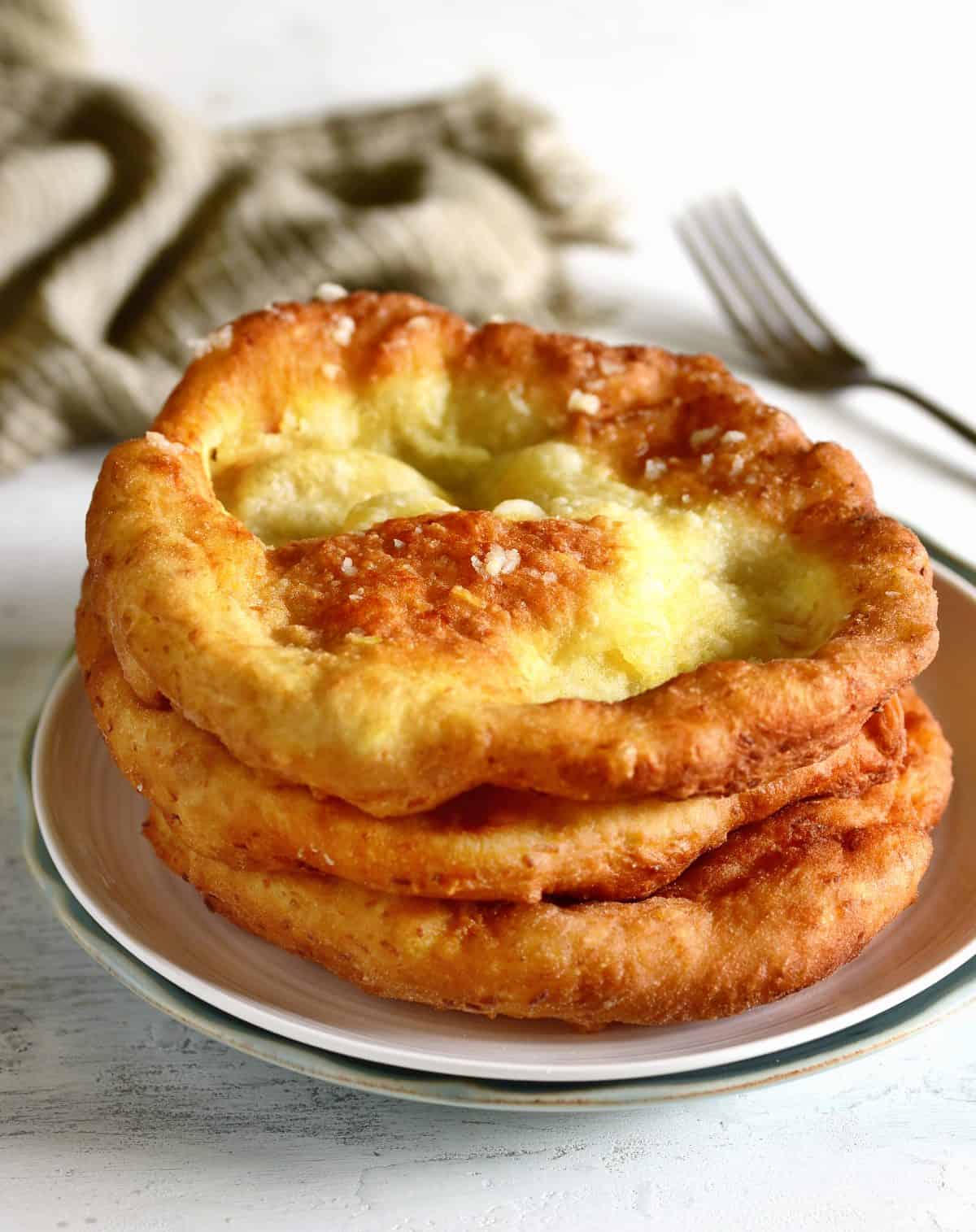
➜ What Is Langos
Langos (langoš in Czech) is a Hungarian flatbread made from yeast dough. Pieces of proofed dough are stretched into discs and deep-fried from each side until golden and crispy.
Langos tastes neutral on its own, but it can be topped with both sweet or salty toppings. Czechs probably love the variant with garlic sauce topping, grated cheese, and ketchup the most.
Langos is typical Czech fast food, usually sold in the summer season at festivals, carnivals, and holiday destinations.
➜ Pronunciation
Hungarian call this bread lángos, in the Czech, it is langoš. The pronunciation in both languages is very similar: /ˈlaːŋɡoʃ/
I recorded a short audio clip on how to pronounce the Czech word "langoš".
Try out: Topinka garlic bread is another sort of goodness from the Czech easy recipes category!
➜ Ingredients
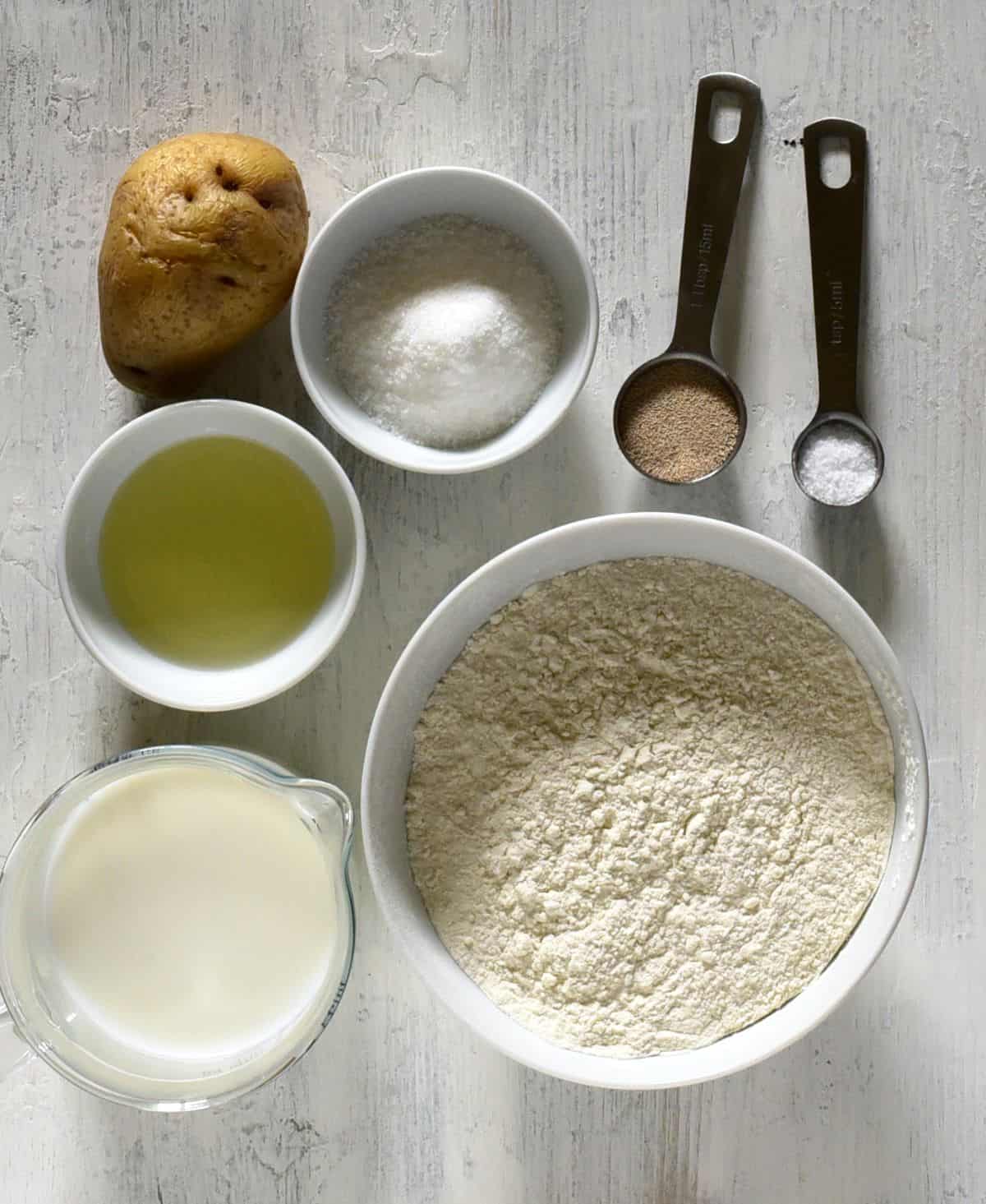
Ready to make langos from scratch? Let’s take a look at the shopping list:
- Instant yeast; Czechs usually use fresh yeast, but instant yeast works as well in this recipe
- Milk; lukewarm, to create proper conditions for the yeast
- Sugar; to feed the yeast
- Potato; boiled ahead, ideally the day before; the potato needs to be cooled down
- All-purpose flour
- Vegetable oil; added to the dough
- Salt
- Oil; for deep frying
- All-purpose flour; to dust the worktop
✅ You’ll find the exact amount of ingredients below in the recipe card, which you can also print out.
Langos Topping
- Fresh garlic, pressed
- Water
- Salt
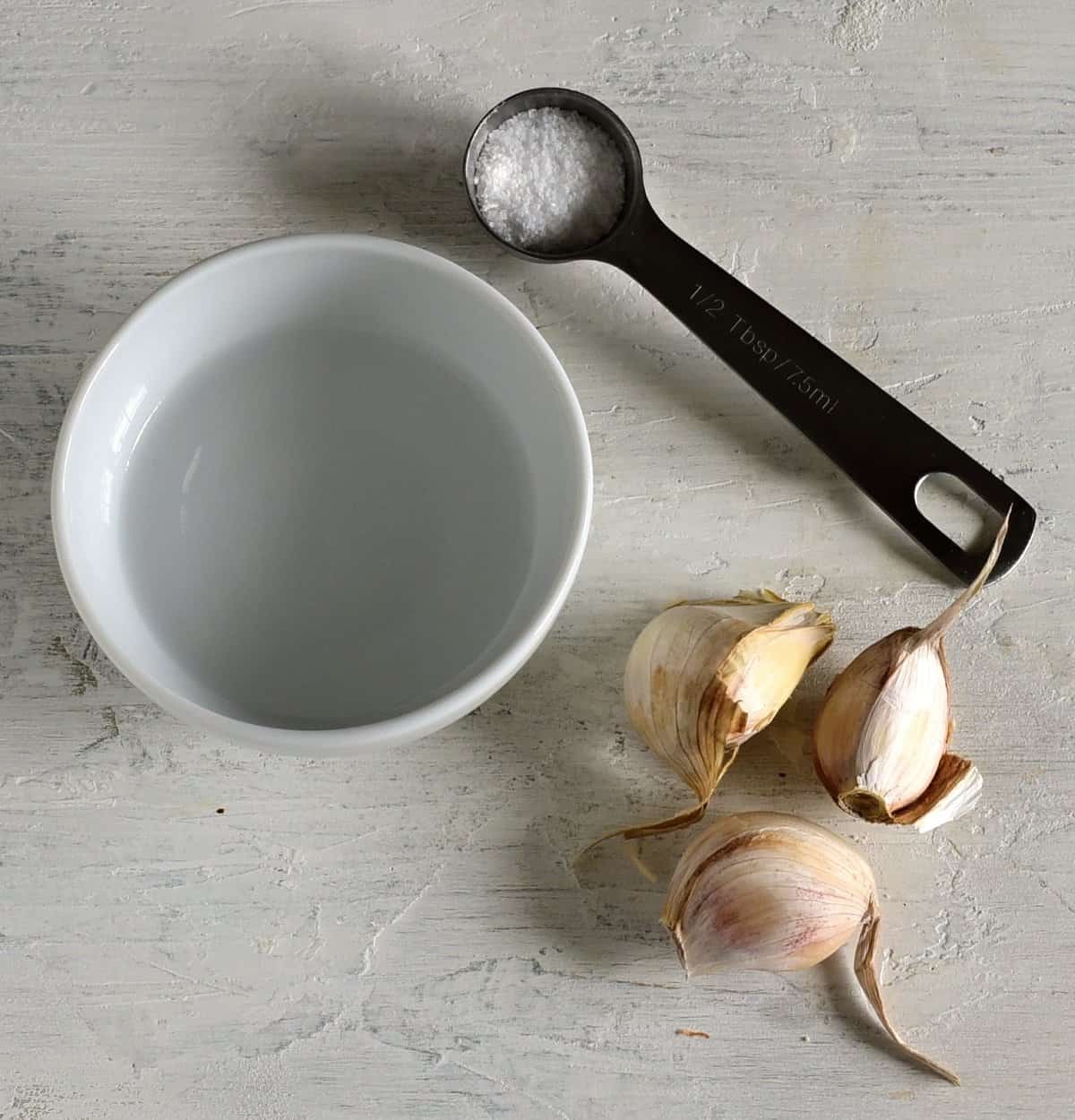
I used the simplest topping in this recipe, just crushed or pressed garlic mixed with water and salt. It’s incredibly tasty and perfect for your very first encounter with this delicious food.
➜ How to make langos bread
This recipe calls for a potato add-on, this means a portion of boiled, cooled, and grated potato. In other words, we are going to make potato langoš!
STEP 1: Cook potato and let it cool down. If you don’t forget, the ideal time is to boil a potato the day before.
STEP 2: Warm half of milk, the milk should be lukewarm, not too hot. Add 1 teaspoon of sugar to the milk and sprinkle instant yeast in it. Stir and let the yeast work in a warm place for 10-15 minutes until bubbly.
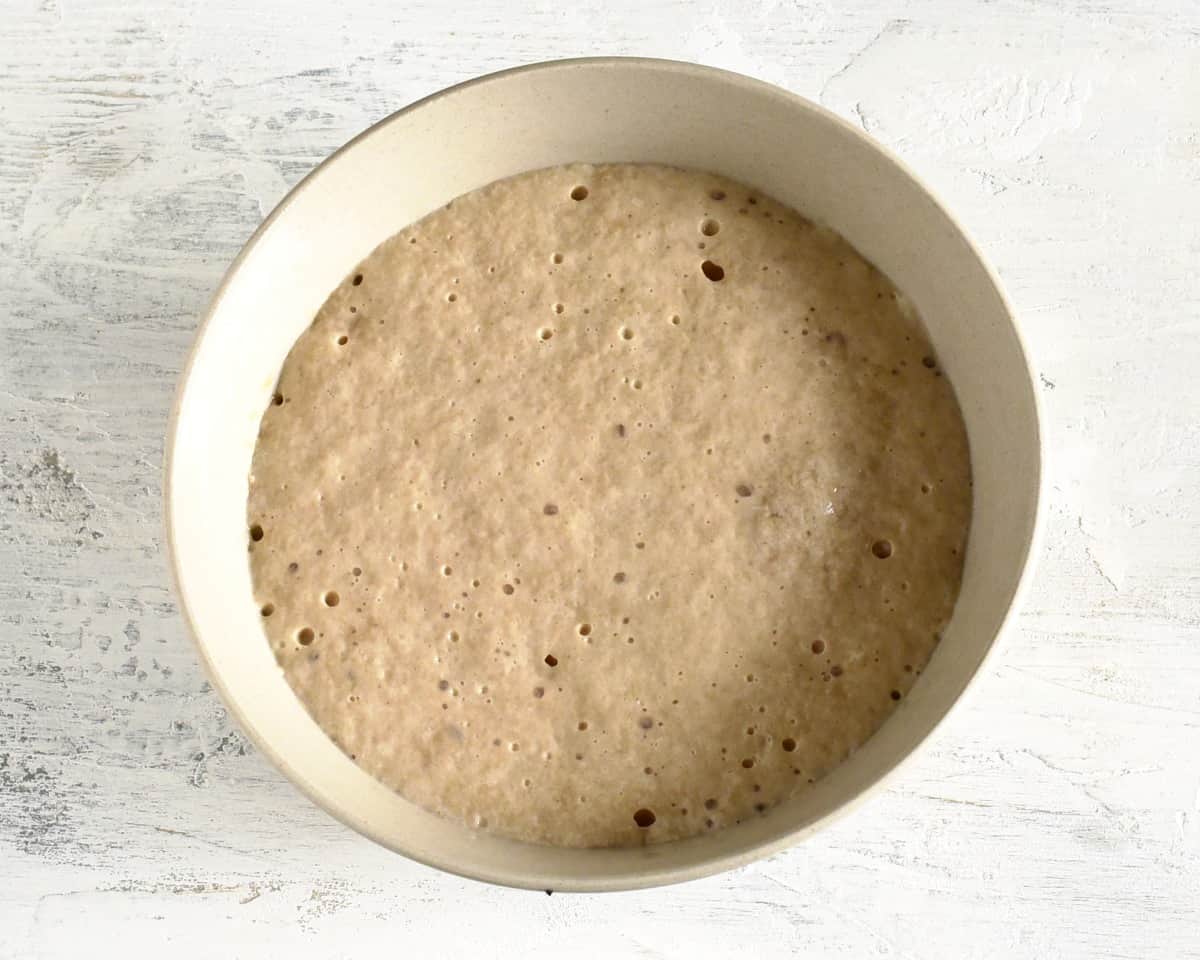
STEP 3: Peel and grate the boiled, cooled potato. For grating, I used a hand grater.
STEP 4: Place the flour combined with the salt in a large bowl, add the activated yeast mixture, grated potato, vegetable oil, and the rest of the milk. Make a semi-tough dough, use a wooden spoon and your hands, or a kitchen mixer with a proper attachment.
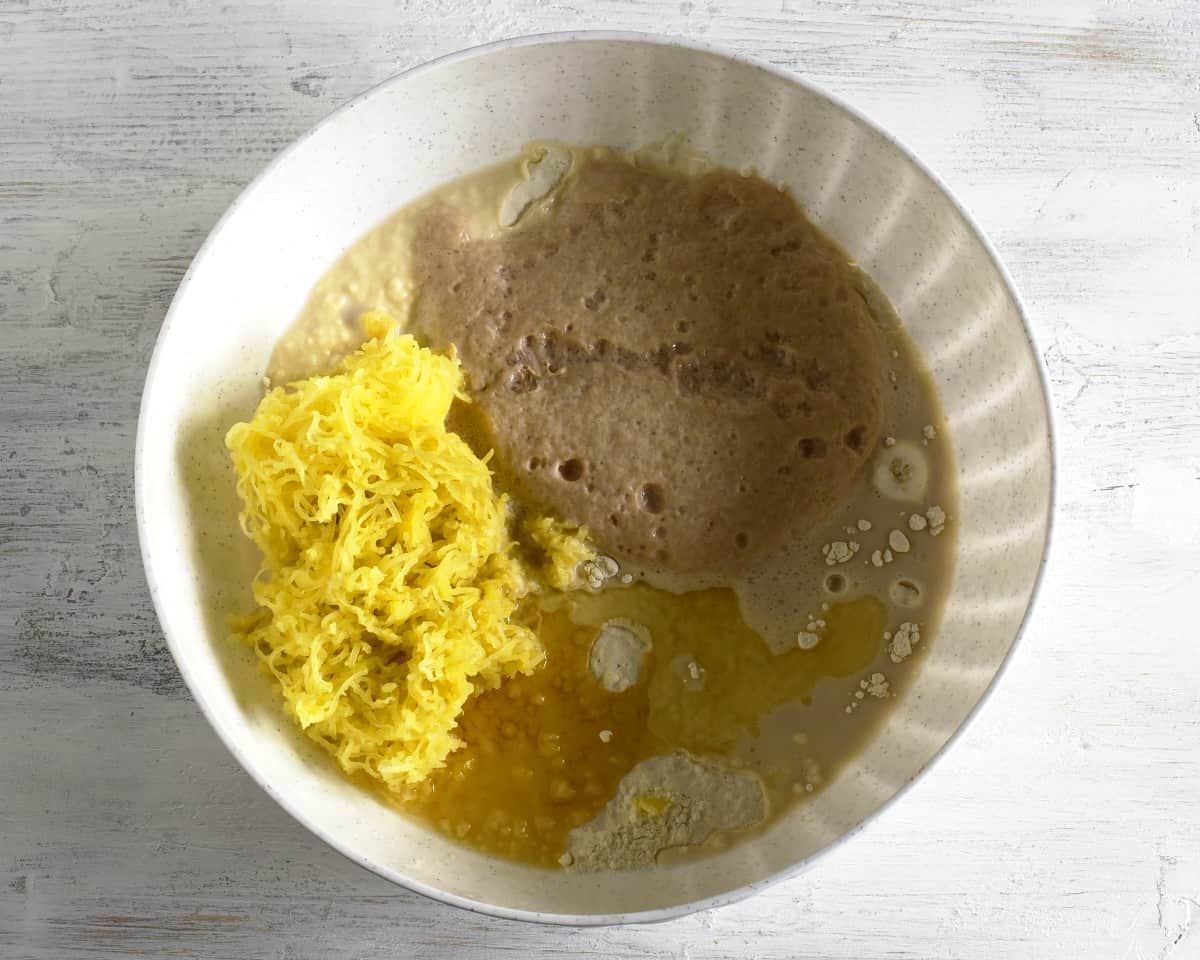
STEP 5: Let the dough leaven in a warm environment. My favorite method is to place a pot with hot water in the bottom of a turned-off oven, add the bowl with the dough, close the oven door, and allow the dough to rise. In this humid and warm environment, the yeast dough leavens like crazy! It takes less than 1 hour, and the dough is doubled, and ready to use.
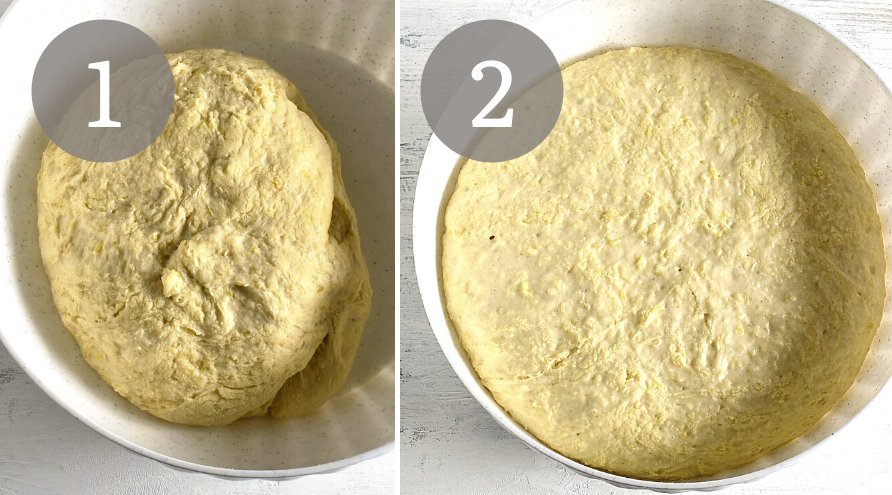
⤍ Learn how to make dough rise in the oven.
STEP 6: Flour a worktop, dump the proofed dough on it, and divide into 6 equal-sized pieces. Shape them into balls and let them leaven for another 15 minutes.
STEP 7: Heat the oil in a frying pan over medium heat. Langos should swim in oil while frying, you need at least a 1-inch layer of oil.
STEP 8: Stretch each piece of dough with your fingers into a 10-inches (25 cm) large, thin disc.
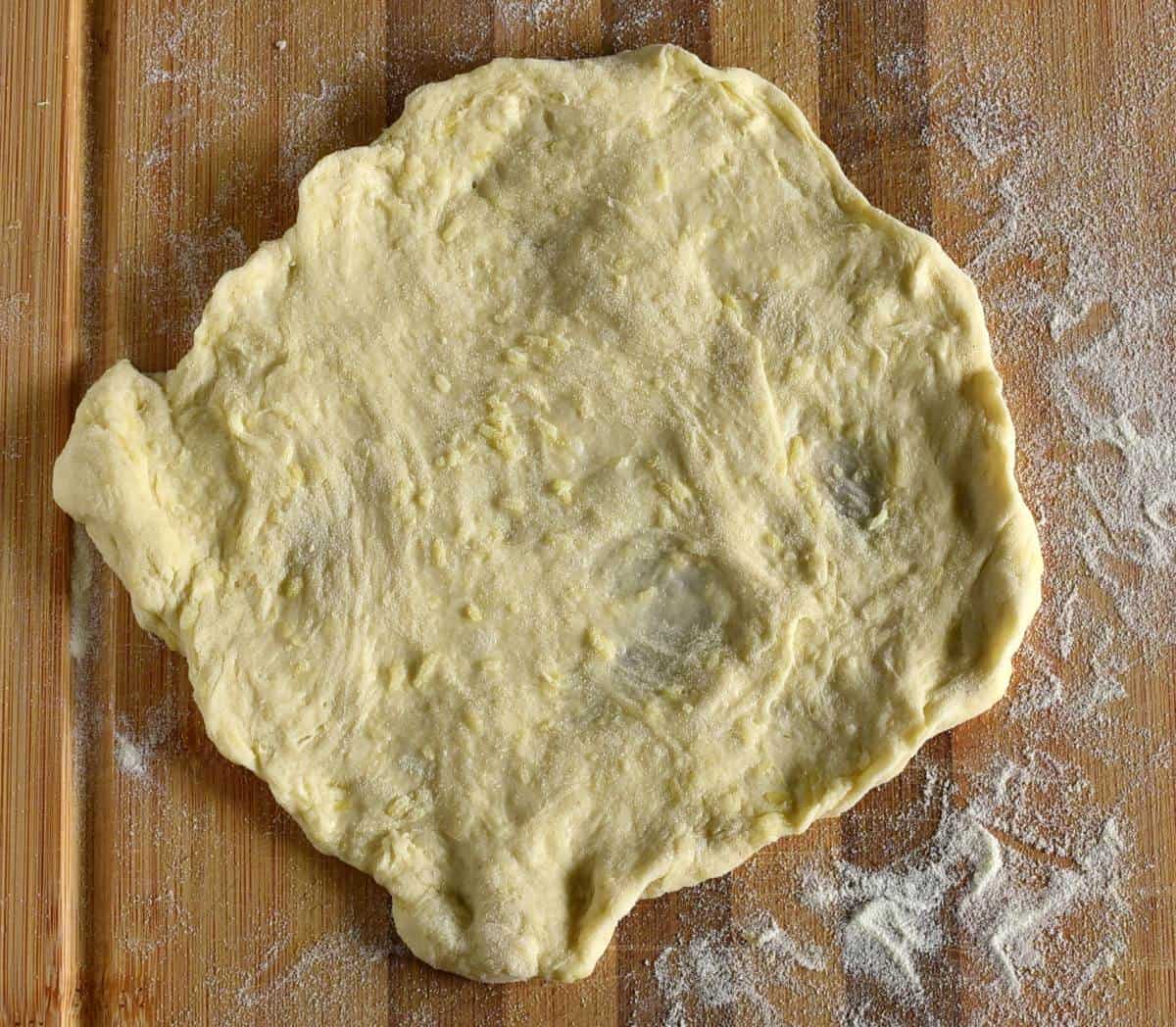
STEP 9: Fry until golden, then flip and fry the other side. It’s done in a flash. Count on 1 minute for each side.
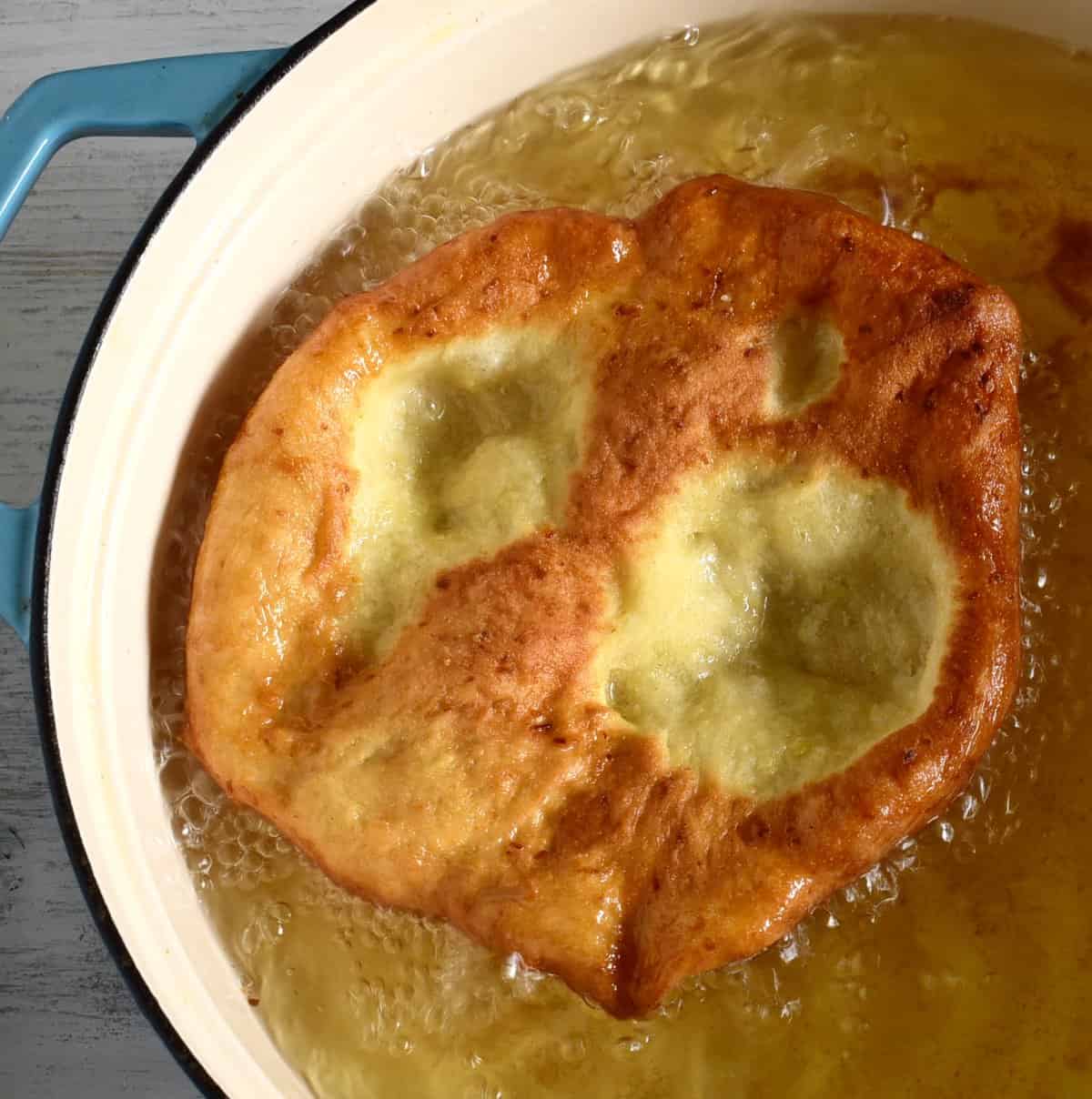
STEP 10: Make the garlic topping: Peel garlic cloves and press them. Add pressed garlic in a small bowl and combine with water, add salt, stir.
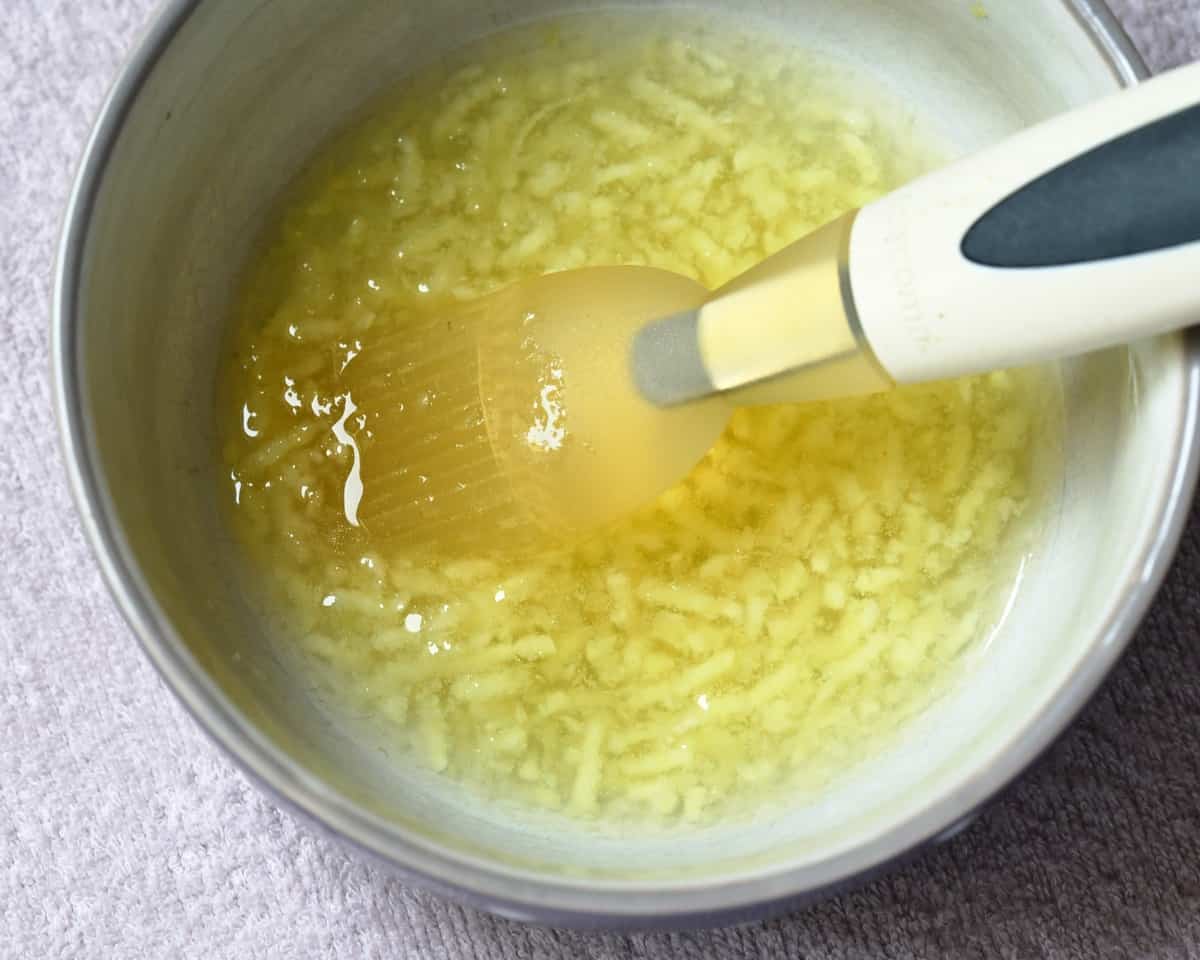
STEP 11: Brush the top of langos with garlic topping and serve warm.
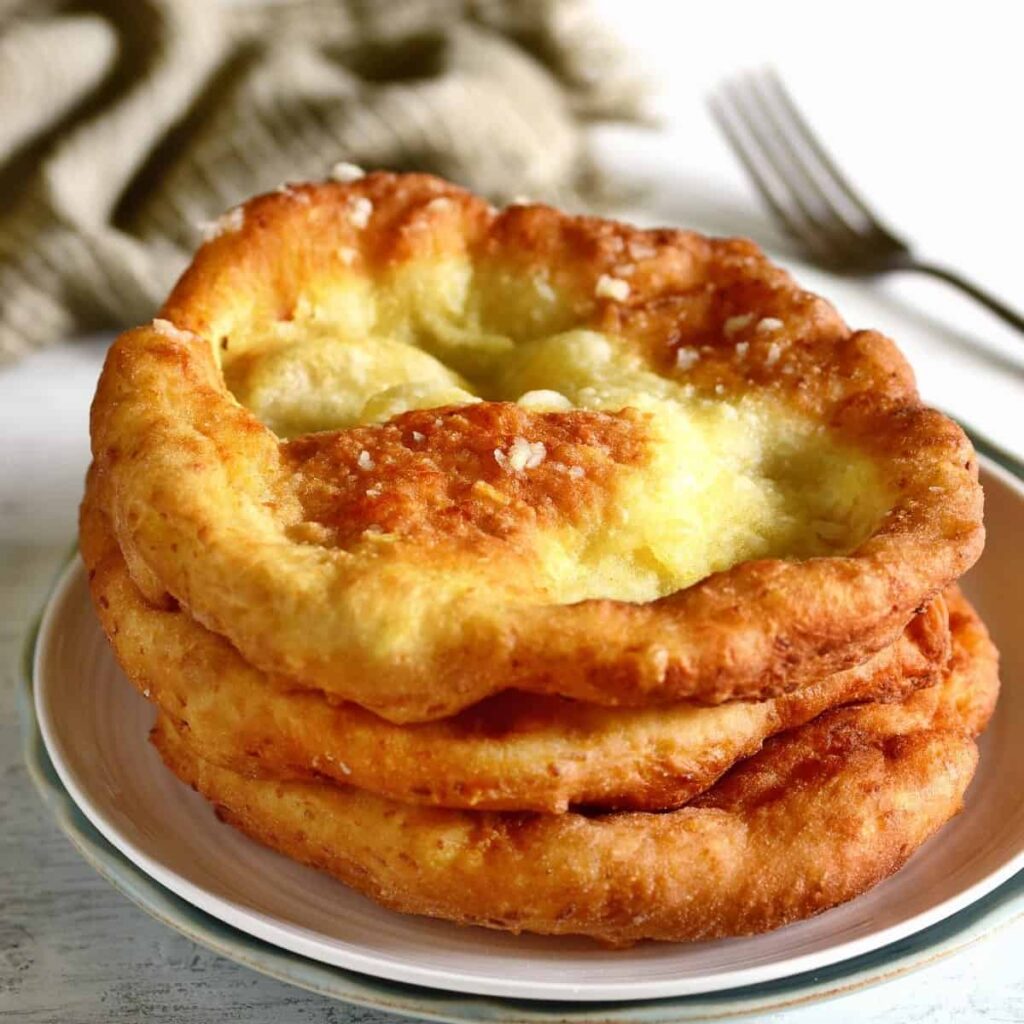
➜ Langos Topping
You can eat langos with sweet or salty topping.
Sweet variations:
- Sour cream with sugar, small fruit, drizzled with honey
Salty variations:
- Rubbed with garlic sauce, topped with grated cheese (eg Cheddar) and ketchup
➜ Useful Tips
- There are also langos recipes without potatoes. However, potato langoše taste even better than the plain ones!
- You could make langos a little bit healthier if you used a paper towel and drained the exceeded fat out of them right after frying.
More Czech Bread Recipes:
➜ Where Does Langos Come from and What Does Its Name Mean?
Langos is authentic Hungarian food, its name (lángos, or langosz, langosh) is derived from the word flame. That’s because Hungarian shepherds used to make langoses in fire flames.
Czechs were a part of the Austro-Hungarian monarchy back in the day, and thus both cuisines have many recipes in common.
Tried this recipe?
Leave a review down in the comments! ⭐⭐⭐⭐⭐
Follow me on Facebook and Pinterest. Subscribe to my newsletter. Send me any question about Czech cuisine to my e-mail. I love hearing your feedback!
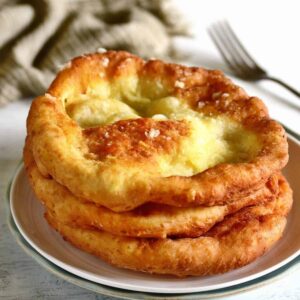
Lángos Bread
Ingredients
Langos dough:
- 1 cup milk (240 ml) lukewarm
- 1 Tablespoon instant yeast
- 3 Tablespoons granulated sugar
- 1 potato boiled and cooled
- 3 cups all-purpose flour (390 g)
- 3 and ½ Tablespoons vegetable oil
- 2 teaspoons salt
Topping:
- 3 cloves garlic
- ¼ cup water (60 ml)
- 1 teaspoon salt
Misc.
- oil for frying
- all-purspose flour to dust a worktop
Instructions
- Cook potato and let it cool down. If you don’t forget, the ideal time is to boil a potato the day before.
- Warm half of milk, the milk should be lukewarm, not too hot. Add 1 teaspoon of sugar to the milk and sprinkle instant yeast in it. Stir and let the yeast work in a warm place for 10-15 minutes until bubbly.
- Peel and grate the boiled, cooled potato. For grating, I used a hand grater.
- Place the flour combined with the salt in a large bowl, add the activated yeast mixture, grated potato, vegetable oil and the rest of the milk. Make a semi-tough dough, use a wooden spoon and your hands, or a kitchen mixer with a proper attachment.
- Let the dough leaven in a warm environment. My favorite method is to place a pot with hot water in the bottom of a turned off oven, then add the bowl with the dough, close the oven door and allow the dough to get risen. In this humid and warm environment, the yeast dough leavens like crazy! It takes less than 1 hour and the dough is doubled, ready to use.
- Flour a worktop, dump the proofed dough on it, and divide into 6 equal-sized pieces. Shape them into balls and let them leaven for another 15 minutes.
- Heat the oil in a frying pan over medium heat. Langoš should swim in oil while frying, you need at least 1 inch layer of oil.
- Stretch each piece of dough with your fingers into a 10-inches (25 cm) large, thin disc.
- Fry until golden, then flip and fry the other side. It’s done in a flash, count on 1 minute for each side.
- Make the garlic topping: Peel garlic cloves and press them. Add pressed garlic in a small bowl and combine with water, add salt, stir.
- Brush the top of langos with garlic topping and serve warm.
Notes
- Makes 6 langos.
- There are also langos recipes without potatoes. However, potato langos taste even better than the plain ones!
- You could make langos a little bit healthier if you used a paper towel and drained the exceeded fat out of them right after frying.
DISCLAIMER: Because I come from Central Europe, my recipes are based on metric units such as grams or milliliters. Check out how I convert metric units to the U.S. system:
Conversion chart

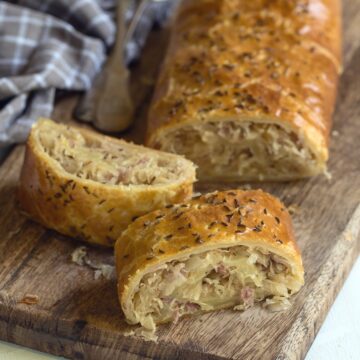
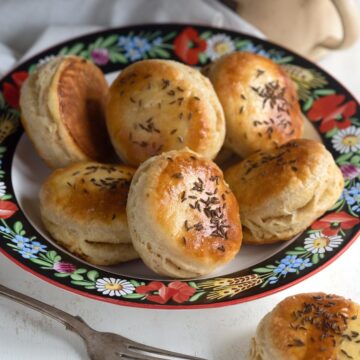
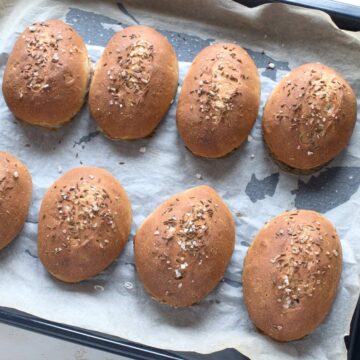
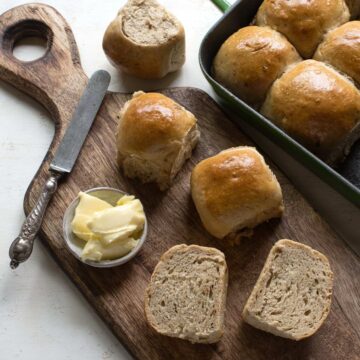
Mila marsh
Hello Petra . Are You going to post apple strudel in near future?Thank You. Mila ????????
Petra Kupská
Ahoj Mila, yes, apple strudel is on my list! I wanted to post "tažený štrúdl" recipe earlier, however, this dough is quite complicated, especially for beginners. The simplest way is to use puff pastry. Yet, I have one easy tried recipe, which I am going to post soon. Many greetings to Canada, Petra
Peter
Ahoj Petra,
Thanks for this very nice recipe.
In the ingredients, how much does a Tbsp represent ?
4 Tbsp of Vegetable oil (about 54g) looks a lot for the amount of dough.
Many thanks for your reply !
Petra Kupská
Ahoj Peter, thank you for asking, I'll be happy to explain.
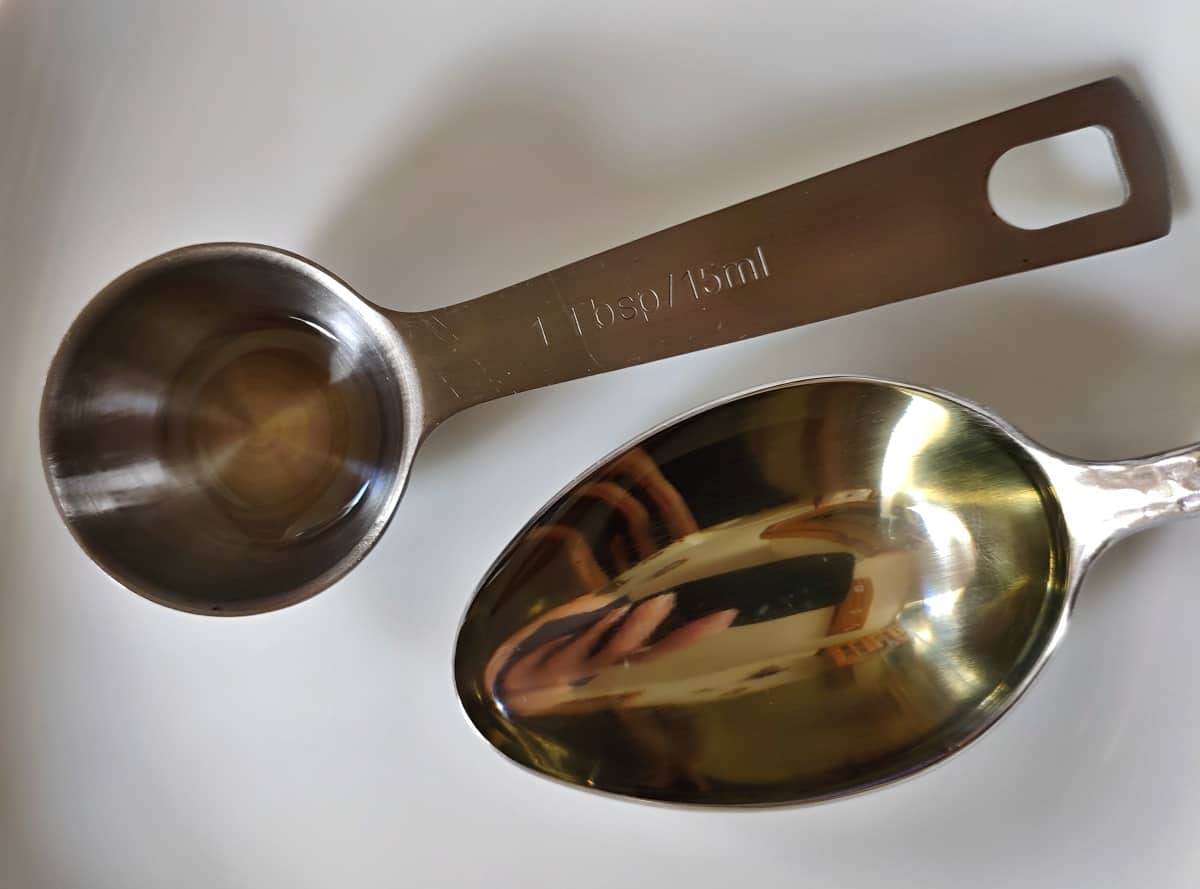
I double-checked the recipe I'm using to make the lángos breads, and it does indeed say 4 tablespoons of oil. However, I didn't give up and checked the volume of 1 US Tbsp and a regular kitchen spoon that is commonly used in CZ recipes. 1 US Tbsp has a volume of 15 ml – I'm not sure how much that is in grams; I found online that 1 Tbsp of oil should weigh about 13.5 g. But, a regular spoon has a slightly smaller volume than a standard US Tbsp. I tried pouring 1 US Tbsp into a regular spoon and there was a little oil left in the measuring cup. Conclusion: The recipe should use about 3 and 1/2 US Tbsp, a little less than the recipe states - I better adjust this information in this post. On the other hand, 1/2 Tbsp should not play a big role in this recipe. The dough for lángoses is quite sticky, it's a good practice to keep your hands dipped in flour so that the pieces of dough can be shaped well.
I hope I have written the information at least a little clear. Fingers crossed that the lángos breads are a success! Many greetings, Petra
Linda B Hall
In step 3 you say to "Peel and grate the boiled, cooled potato. For grating, I used a hand grater." but you never say what to do with it. Do you add it to the mixture in step 4?
Petra Kupská
Hi Linda, thank you for your comment! I checked the recipe and you are correct, step 4 is missing the instruction to add the grated potato. I have added the information to both the procedure and the recipe card. Thank you for the heads up!